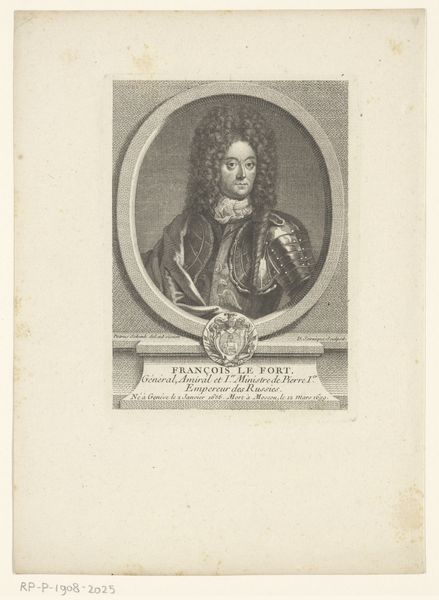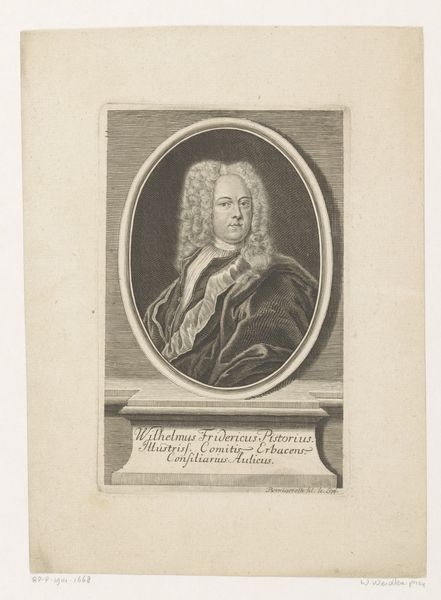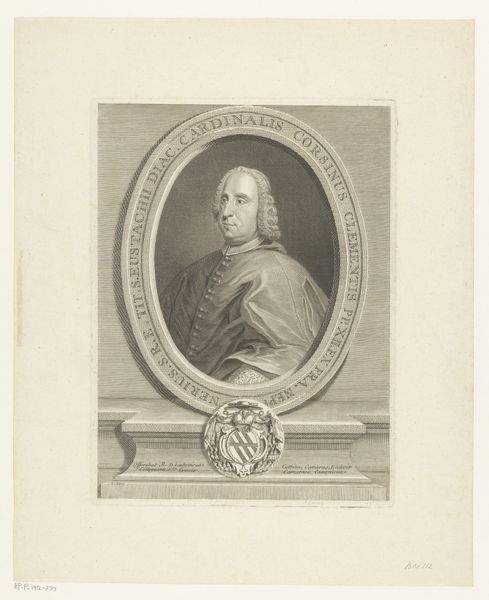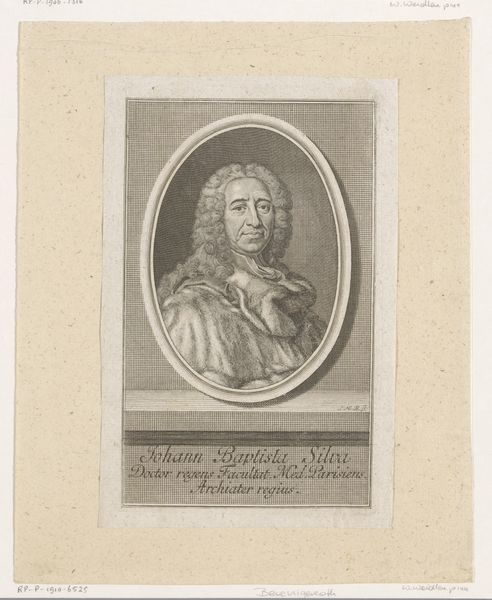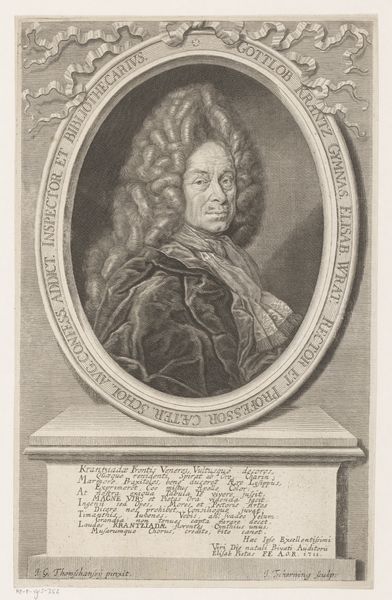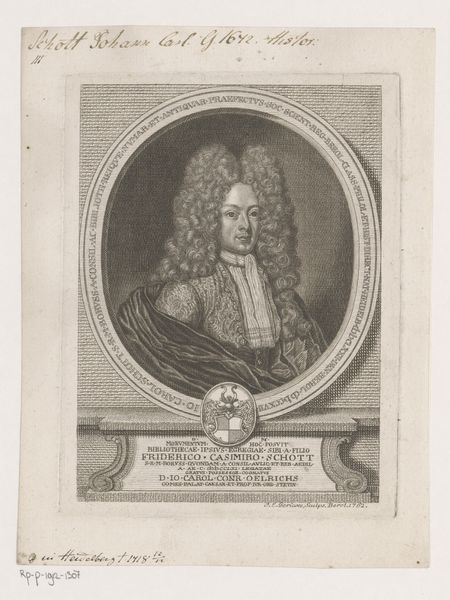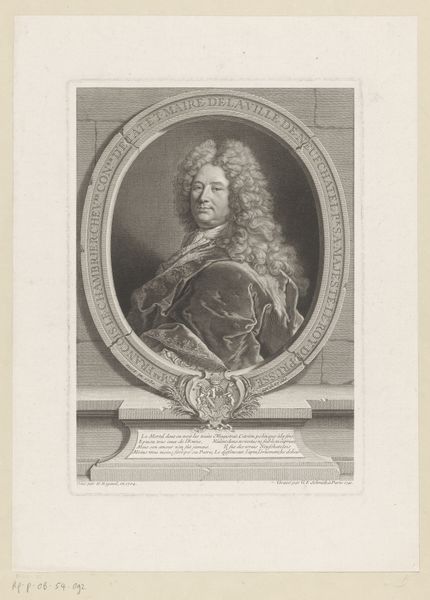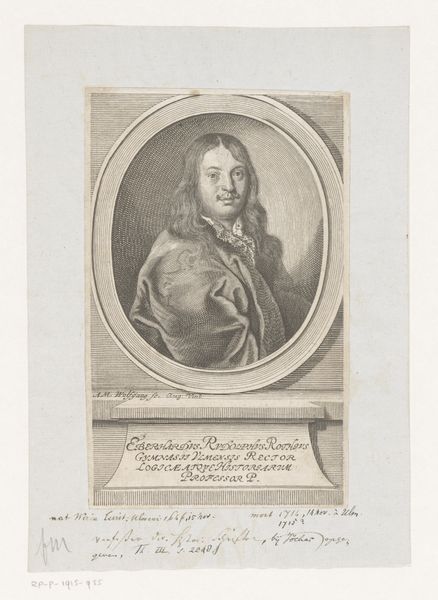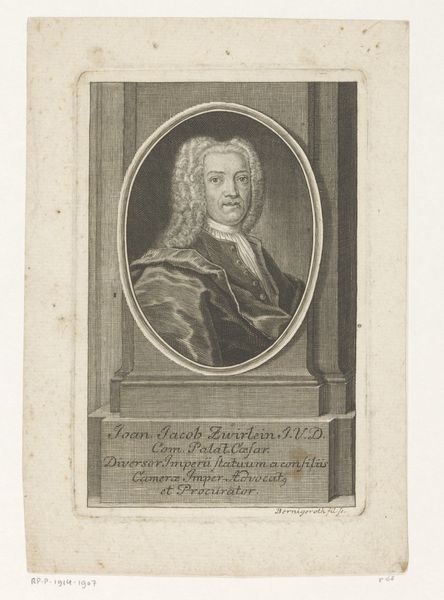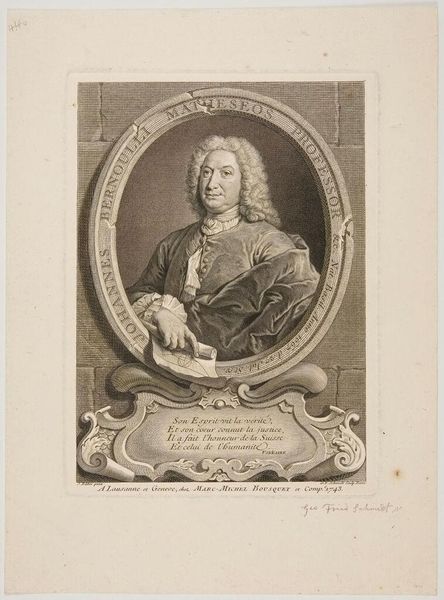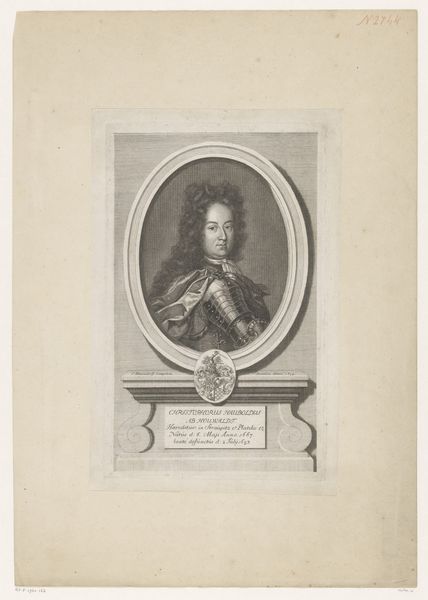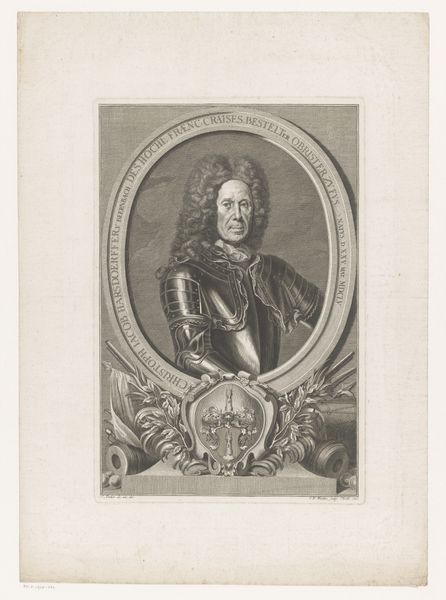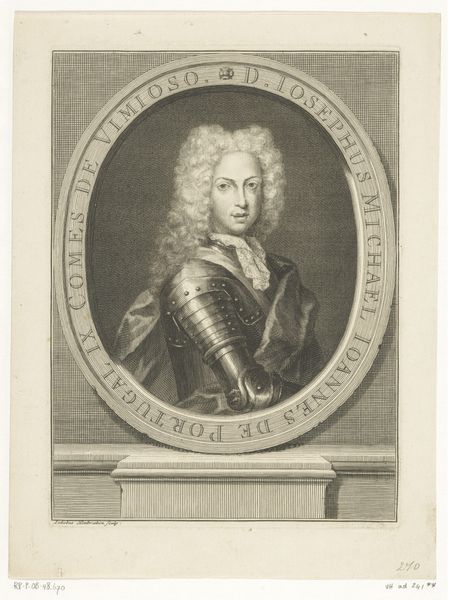
etching, engraving
#
portrait
#
baroque
#
etching
#
academic-art
#
engraving
Dimensions: height 140 mm, width 100 mm
Copyright: Rijks Museum: Open Domain
Curator: This is "Portret van Bernard le Bovier de Fontenelle", an etching made sometime between 1700 and 1751 by Pierre Dupin. Its elegant academic style speaks to the aesthetics of the Baroque era. Editor: My immediate thought is, this man looks supremely self-assured! It's the pose, that slight smirk, the perfectly coiffed wig. I bet he was used to holding power in the social hierarchies of his time. Curator: Indeed. The Baroque emphasis on grandeur and status is clearly present, both in the subject’s bearing and the overall composition. Those symbols of luxury communicated power—specifically male power, of course. Editor: Right. We have to consider what it meant to have your likeness memorialized like this back then, what social structures supported this kind of portraiture. Fontenelle, being a prominent figure in the Académie Française, benefits from specific gender, class, and race privileges. Curator: Portraits like this often aimed to create a sense of timelessness and universality, embedding the sitter within a larger narrative of cultural significance. Look at the oval frame—an ancient symbol of perfection and continuity. He's not just Bernard le Bovier, but an archetype of intellectual and cultural achievement. Editor: And the engraving reinforces this ideal through its precise lines, its careful modulation of light and shadow, right? Dupin isn’t merely recording a face; he's constructing an image of authority, of unassailable knowledge. Still, seeing it now, removed from its time, one starts to question those very ideals and how those systems are still influencing how we see and understand each other today. Curator: That push and pull is exactly what makes revisiting these artworks meaningful, seeing that continuity and being ever more sensitive about what ideals it conveys. It reminds us that images carry emotional and ideological weight through the ages. Editor: Definitely. Considering the social narratives embedded in these older portraits allows us to critically engage with historical representation and its impact on present day societal understandings. Thanks for walking me through it.
Comments
No comments
Be the first to comment and join the conversation on the ultimate creative platform.
